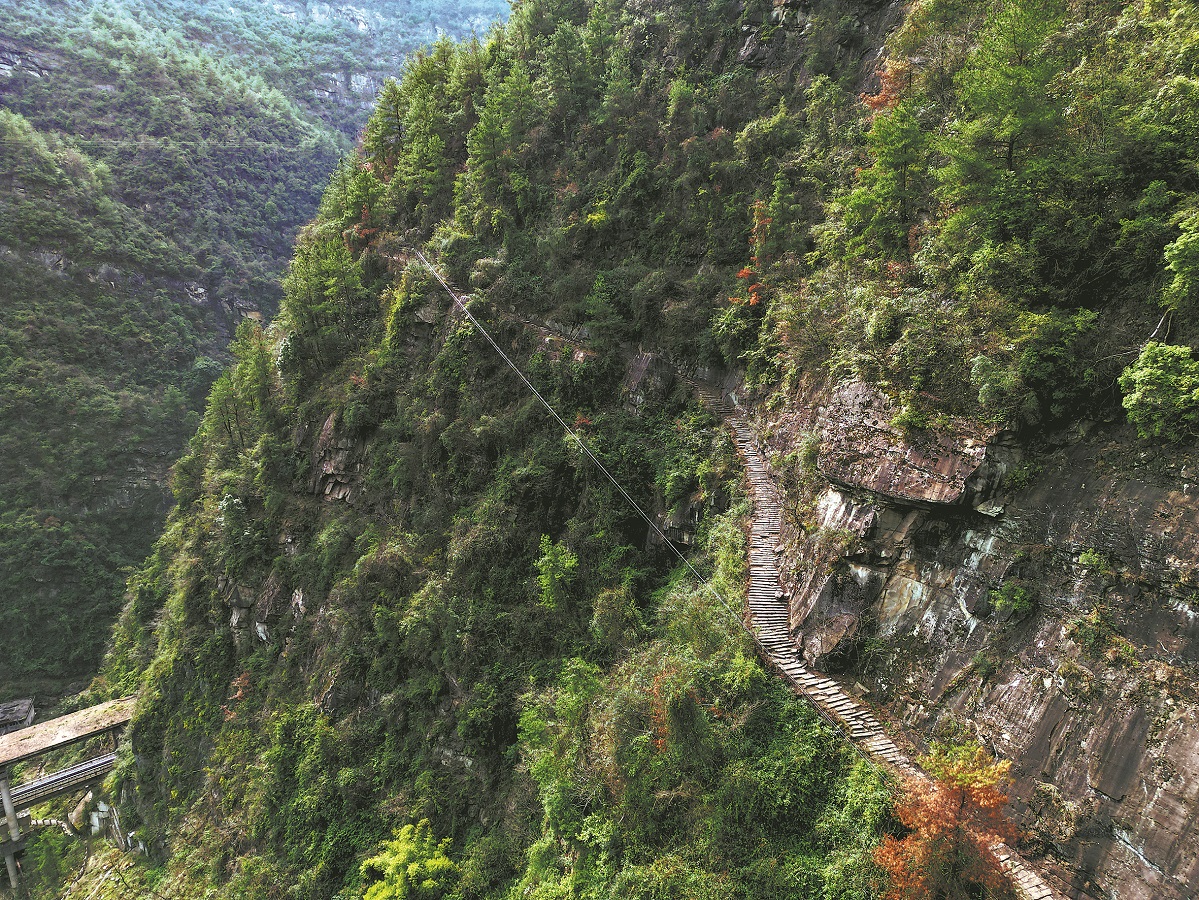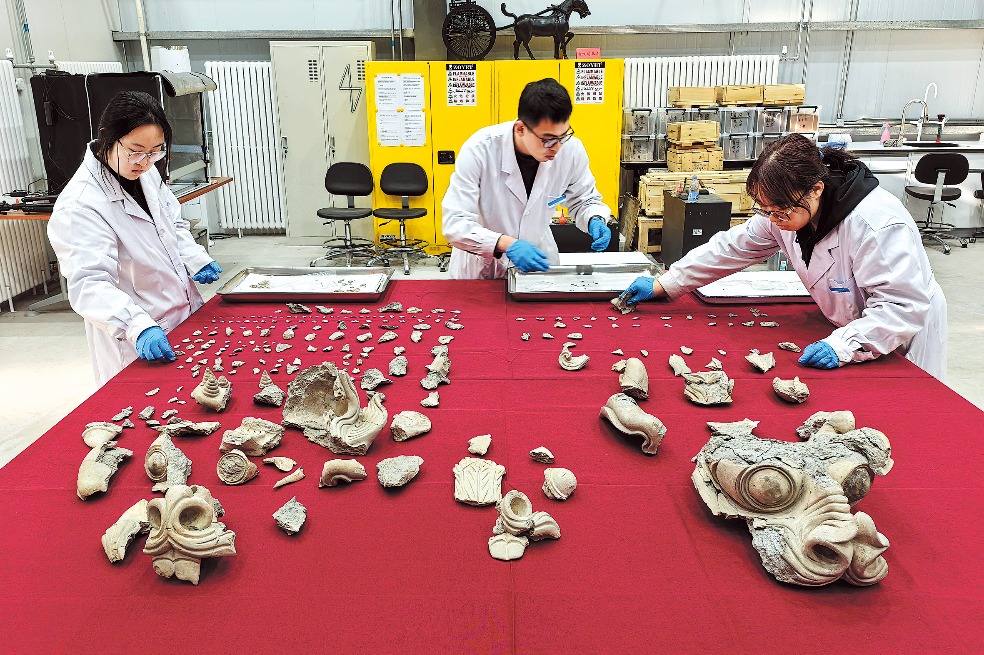Ancient roads paved foundation of national unity
Research reveals Shudao network's role in connecting people from different areas, cultures






Winding through mist-covered mountains and flourishing forests, ancient stone steps cling defiantly to cliffs.
Weathered planks and chiseled paths are witness to old tales of merchants, warriors, travelers and rulers of dynasties whose ambitions forged this ancient construction marvel.
This is Shudao, or "Roads to Shu". Shu is a historical term roughly referring to present-day Sichuan province. The ancient road network spreads from the heart of the Sichuan Basin all the way to the Central China Plains. It is more than 2,000 years old, and played a pivotal role in providing transportation arteries throughout ancient China.
The Tang Dynasty (618-907) poet Li Bai, who grew up in Sichuan, wrote in a famous stanza: "The road to Shu is harder than climbing to the blue heavens."
In July 2023, President Xi Jinping visited Cuiyun Corridor, a section of Shudao in Jiange county, Guangyuan. The corridor is also home to a well-preserved ancient artificial cypress forest in which the oldest tree dates back over 2,300 years. Xi praised the protection efforts that had been made, and urged local authorities to preserve the ancient trees and pass on China's fine traditional culture.
The difficulty of trekking these passageways may have waned thanks to modern transportation, but a new generation of custodians and researchers has set off to revitalize interest in the ancient roads.



















